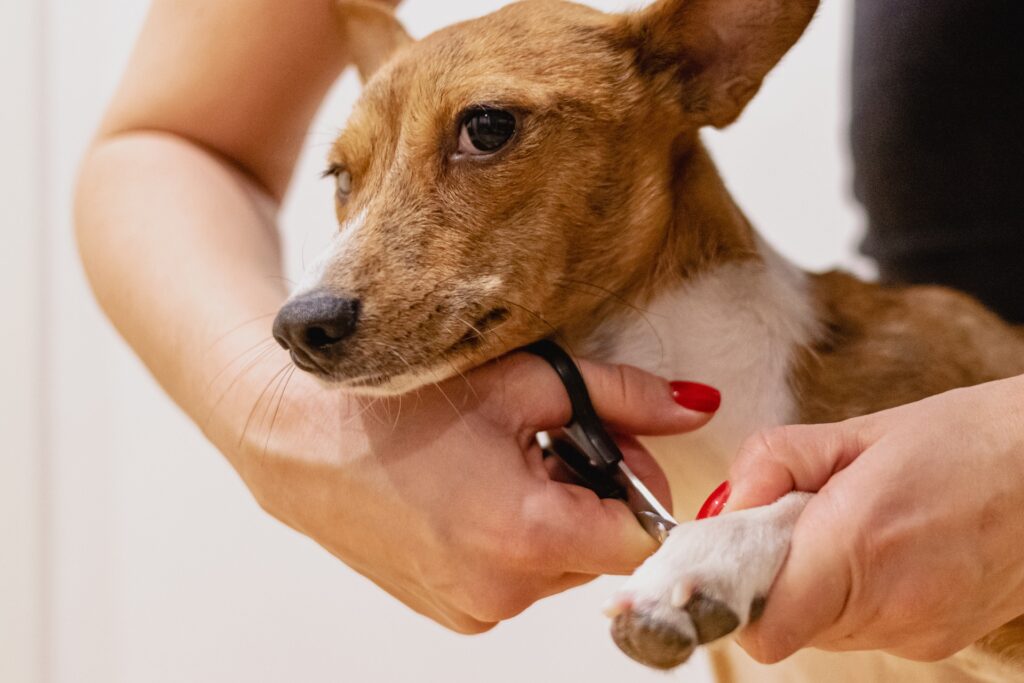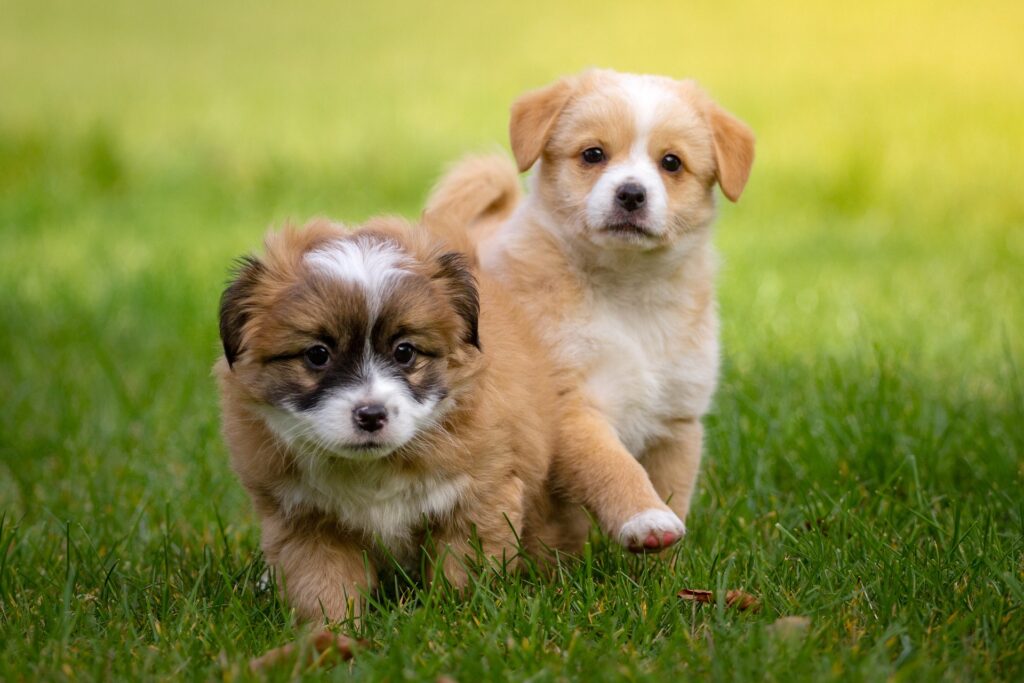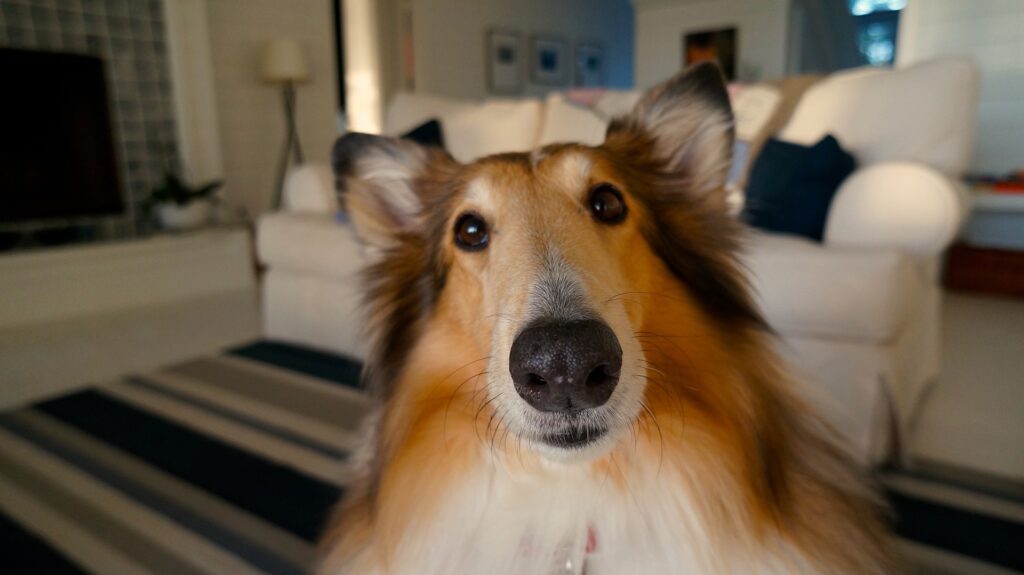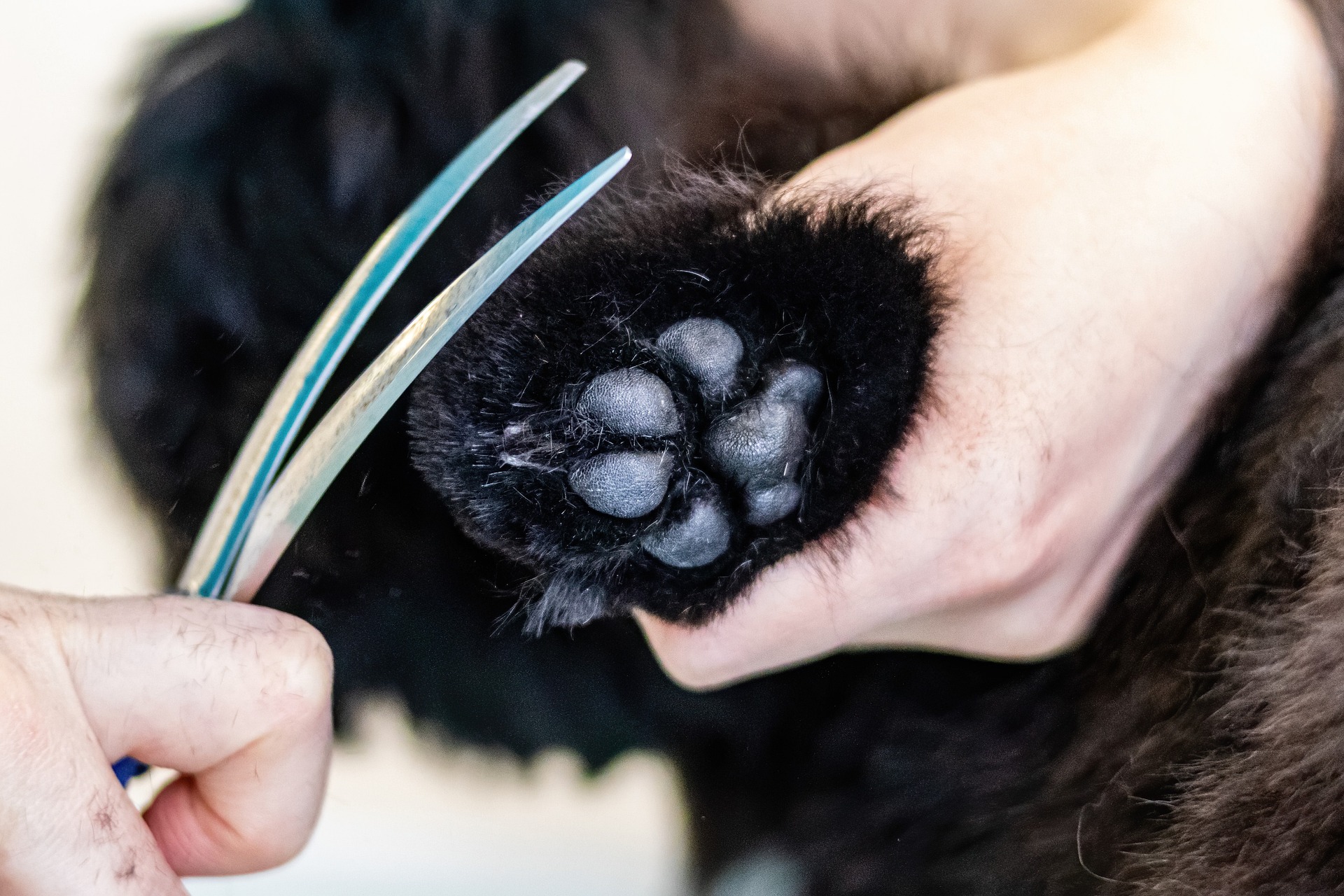April 14, 2023
Does your dog try to flee when you attempt to trim his nails? Or worse, does he growl, snap, or bite?
If you answered yes to any of these questions, there is nothing wrong with your dog. He’s not a bad dog, and he’s not stubborn about having his paws touched. Dog’s paws are sensitive. Nail trims do often cause pain as there are sensitive nerve endings within the nail.
It’s common for owners to think that there is something “off” about their dog if they won’t tolerate nail trims or paw grooming. The fact is, this is normal and your dog simply trying to protect himself from pain or the fear that the trim will result in pain.
Fear looks like “aggression”
If your dog responds to attempts at nail trimming with a growl, snap, or bite he is doing so because he is afraid.
When dogs are scared, they go into a fight, flight, flee, or fawn response (just like humans!). If your dog is restrained and cannot flee, he may try and “fight” to protect himself. While it can feel like a betrayal when our dogs bite, to them, it is a means of survival.
It’s not personal.
Read on to learn more about how to help your dog feel less fearful about nail trims and paw touching. Keep in mind that to keep you and your family safe, it’s important to work with a credentialed force-free trainer on this issue. A trainer will help you determine your dog’s triggers, prevent future bites, and improve your dog’s behavior around nail trims.

What to do if your dog hates nail trims or paw touches
As mentioned, this is common. Take a deep breath and rest assured that there is nothing wrong with you or your dog.
When we work to help an animal love something they are afraid of, the cards are stacked against us. They already have a neural pathway wired for fear at the sight of the nail clipper or each time you reach for their paw.
In this situation, we need to move even slower with our gradual steps. We would start with introducing shoulder, leg, and finally, paw touches.
During these training sessions, we would also introduce the nail clipper without it ever touching the dog. We would create a positive association to the sight of the clipper. This can be done by showing the clipper to the dog, then providing a steady flow of delicious treats for 10-15 seconds. When the clippers disappear, so do the treats.
Be sure to work with a credentialed force-free trainer on this. If your dog is already fearful of nail trims, trying to go it alone with training could easily make his fear even worse.

The best prevention
If you have a puppy, or a dog who is completely neutral about paw touching, let’s start making that experience a happy one right now!
When puppies are 3-12 weeks old they are in the “critical period of socialization.” During this period, they are especially sensitive to good OR bad experiences. As a trainer, it is my job to help your puppy have lots of great experiences early on so he will be a confident well-behaved adult dog.
Where do nail trims fit in here? Making nail trims and paw handling fun and happy for puppies will result in an adult dog who consents to nail trims. It makes life easier for everyone!
The easiest way to start is by touching his paw and feeding a delicious treat. Gradually you can work your way up to introducing a nail trimmer or dremel tool.
Training dogs to like inherently scary things requires a very slow-paced approach. Much slower than you would expect! Teaching a dog to love having their nails trimmed will take weeks, not days.

This seems really hard … is there another way?
I’m glad you asked! It’s time consuming to train a dog to love nail trimming. In the meantime, I recommend using a scratch board so they can file their own front nails.
You can create your own scratch board using a clipboard and sand paper. Or you can purchase one and train your dog to love filing down his own nails.
Remember that your dog’s paws are sensitive and we need to move at his pace during training. Moving at his pace and pairing nail trims with treats will protect him from becoming even more fearful of paw touches and nail trims.
Leave a Reply Cancel reply
Frustrated with reactive outbursts on walks?
Wondering if you will ever enjoy a "normal" walk with your dog?
you need this free guide!
follow along on instagram @modernmannersdogtraining
privacy policy
design by little hound creative

I’ve thought about the nail sander, but how do you get that to work for his back paws?
Good question! There are training plans to have dogs file their own back nails with the scratch board.